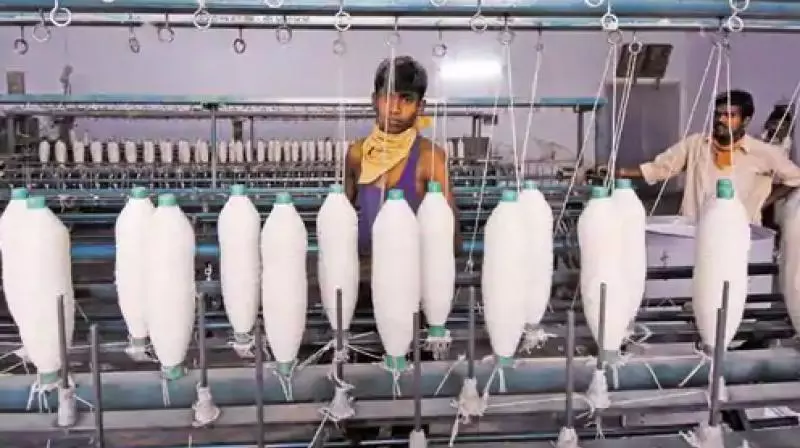
Pall of gloom descends on India as Trump penalty inches in
Tariffs set to impact 55 pc of US-bound shipments worth $48 bn in goods; manufacturing already halted in textile, apparel hubs with labour-intensive sectors set to be hit the most

With the US formally hitting India with 50 per cent tariffs, the additional 25 per cent tariff coming into immediate effect from August 27, a pall of gloom has descended on India.
The Indian government was stunned into silence, with no reaction until evening, although the news hit at 9.30 am IST on August 26. Exporters were immobilised at the finality of the loss of their most lucrative market and the prospect of mass retrenchment of their workers. Capital markets tanked with the Nifty50 crashing by 255 points and BSE Sensex by 850 points.
Also read: US issues notice about additional 25 pc tariffs on Indian imports from Aug 27
Relief for goods in transit
Mercifully, the US notification allows Indian goods transit time and spares them from the additional tariff if they were loaded onto a vessel at the port and are in transit before August 27, 2025. These goods must enter the US “for consumption, or withdrawn from warehouse for consumption before 12:01 am Eastern Daylight Time on September 17, 2025”. For the in-transit exemption to apply, the US importer would need to certify it in the prescribed form.
Meanwhile, the Federation of Indian Export Organisations (FIEO), the apex body for over a dozen export promotion councils recognised by the Indian government, raised an alarm and urged the government to take immediate steps to protect livelihoods.
FIEO raises alarm
In a statement, the FIEO said that the US tariff would impact 55 per cent of India’s US-bound shipments (or around $47-48 billion of goods) due to pricing disadvantages of 30–35 per cent, rendering them uncompetitive against China, Vietnam, Cambodia, the Philippines, and other Southeast and South Asian countries.
Also read: Last-minute miracle may be sole saviour as Trump penalty looms closer
It emphasised that the worst hit would be the labour-intensive sectors like textile and apparel, gems and jewellery, leather, ceramics, chemicals, handicrafts, carpets, and shrimps. Manufacturing had already halted in textile and apparel hubs in Tirupur, Noida, and Surat, it added.
India faces the maximum tariff of 50 per cent, along with Brazil. All other US trade partners face much lower tariffs – 30 per cent for China, 15 per cent for the EU, the UK, Japan, and Korea, 20 per cent for Bangladesh, Vietnam, and Sri Lanka, and 19 per cent for Indonesia, Cambodia, and Pakistan.
Mass layoffs in labour-intensive sectors
The hardest hit labour-intensive sectors are also staring at mass job loss. The capital-and-tech-intensive electronics, pharmaceuticals, refined petroleum products, etc., are in the “exempted” (from tariff) category in the US.
Also read: Trump threatens 200 pc tariff if China withholds rare earth magnets
Vijay Jindal, president of the Garment Exports and Manufacturing Association (GEMA), said textile, garment, and fabric units have been resorting to layoffs two days a week since the end of July as work stopped. Now this would go up, gradually progressing into mass retrenchments.
“Our hopes have been dashed. We are looking at a huge loss,” he said.
The US is not only one of the top export destinations for Indian goods, but it also generates the maximum trade surplus for India – $ 45.8 billion in 2024. In contrast, China, the other top trading partner, bleeds India with a deficit of around $100 billion.
Cascading effect of tariff on economy
It isn’t just labour-intensive exports and jobs in the exporting units that stare at a loss. The US tariff would hurt India’s growth story in many other ways, just as the festive season has begun.
Also read: Who is Peter Navarro? Why is he angry with India, and rest of the world?
The US tariff will continue to hit the capital market, accelerate pullouts by foreign portfolio investors (FPI), devalue the rupee, make banks risk-averse to credit to export sectors, worsen foreign direct investments (FDI), and further slow down private capex – all of which will eventually put a break on overall growth. Global investment banks have predicted a 60-80 basis point fall in GDP if the US tariffs continued for a year.
In such a grim situation, the exporters being hit are desperately looking at the Rs 25,000 crore relief packages the Indian government has been promising. Such reliefs would create their own complications, cutting down government capex or raising sovereign debts and thereby raising fiscal deficits.
In short, a turbulent time ahead.

